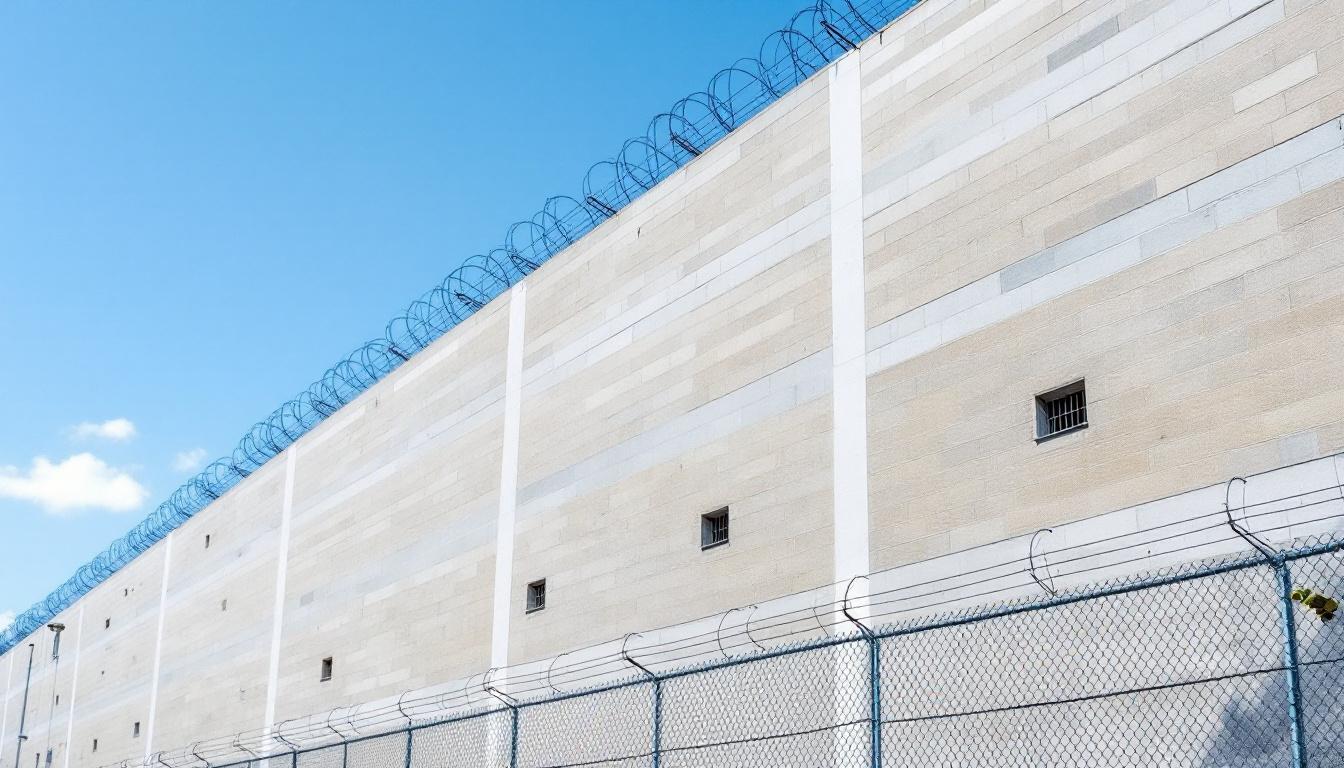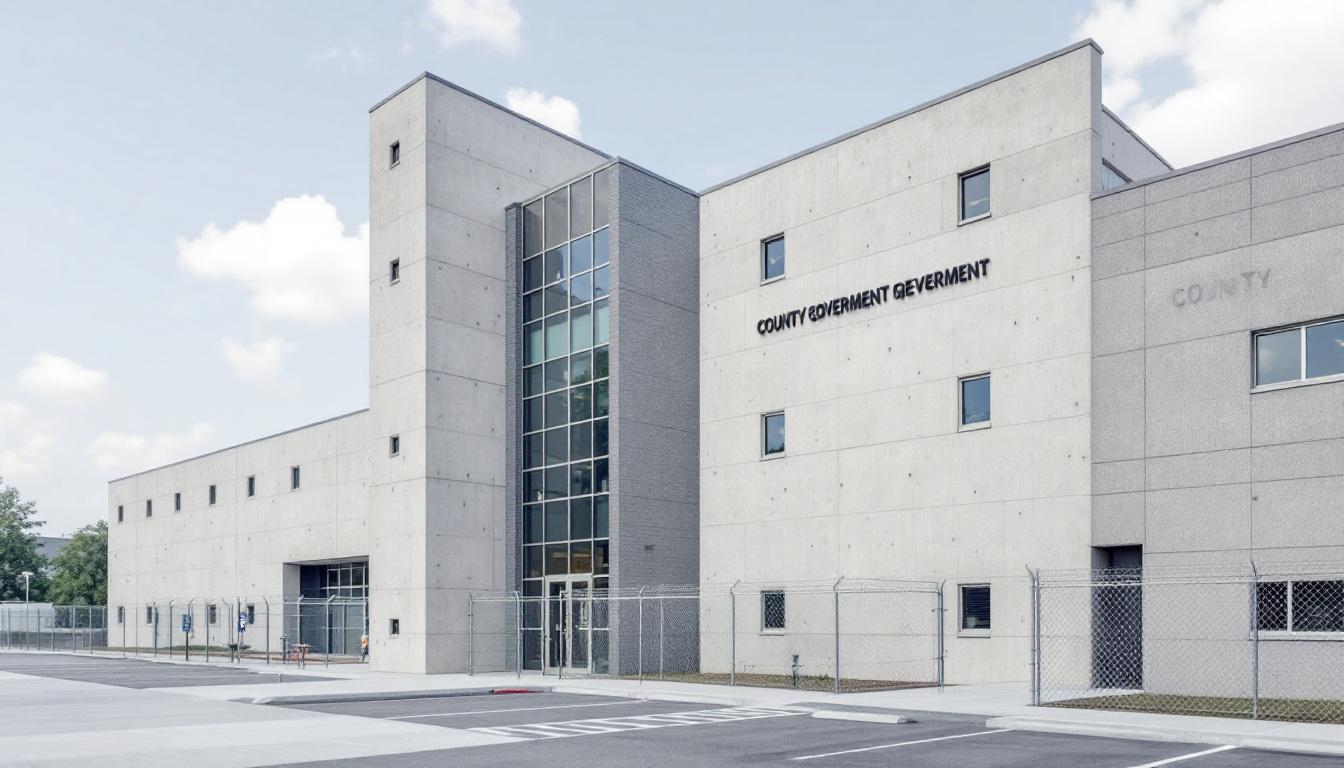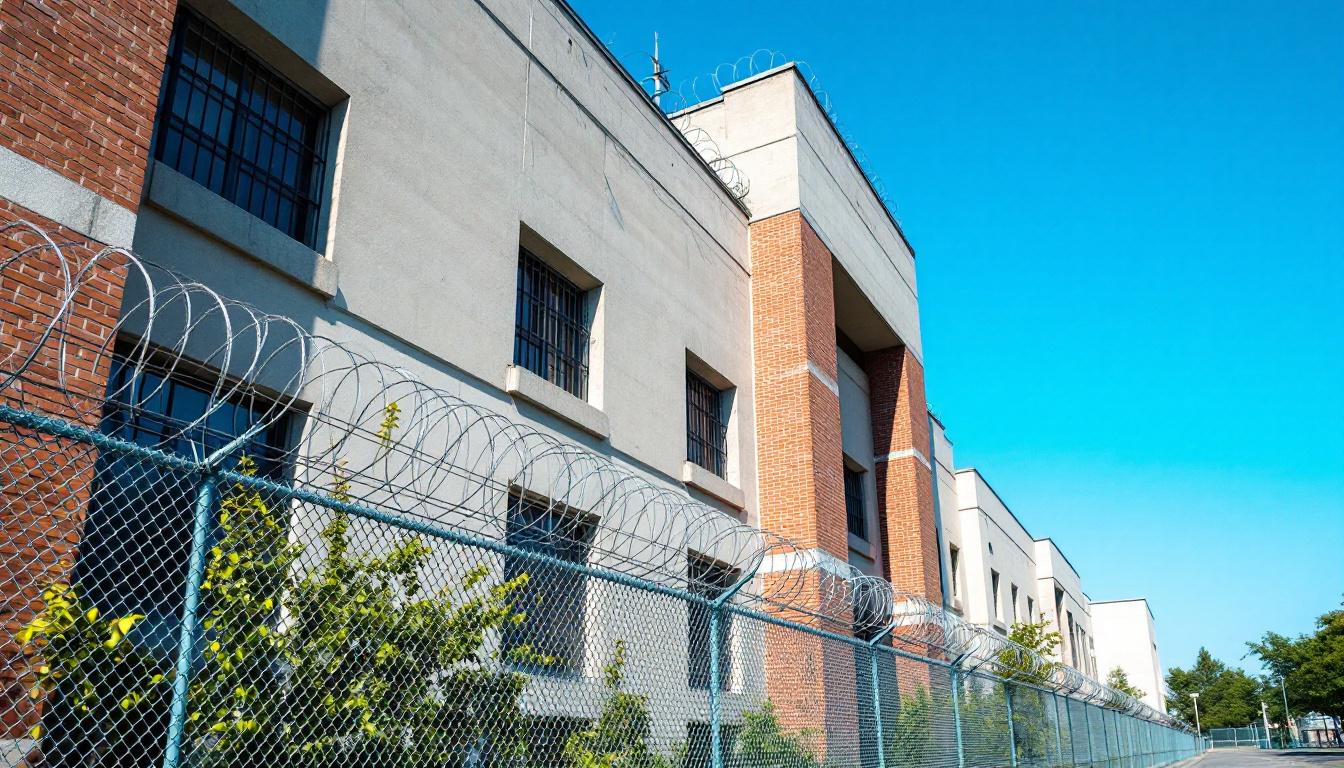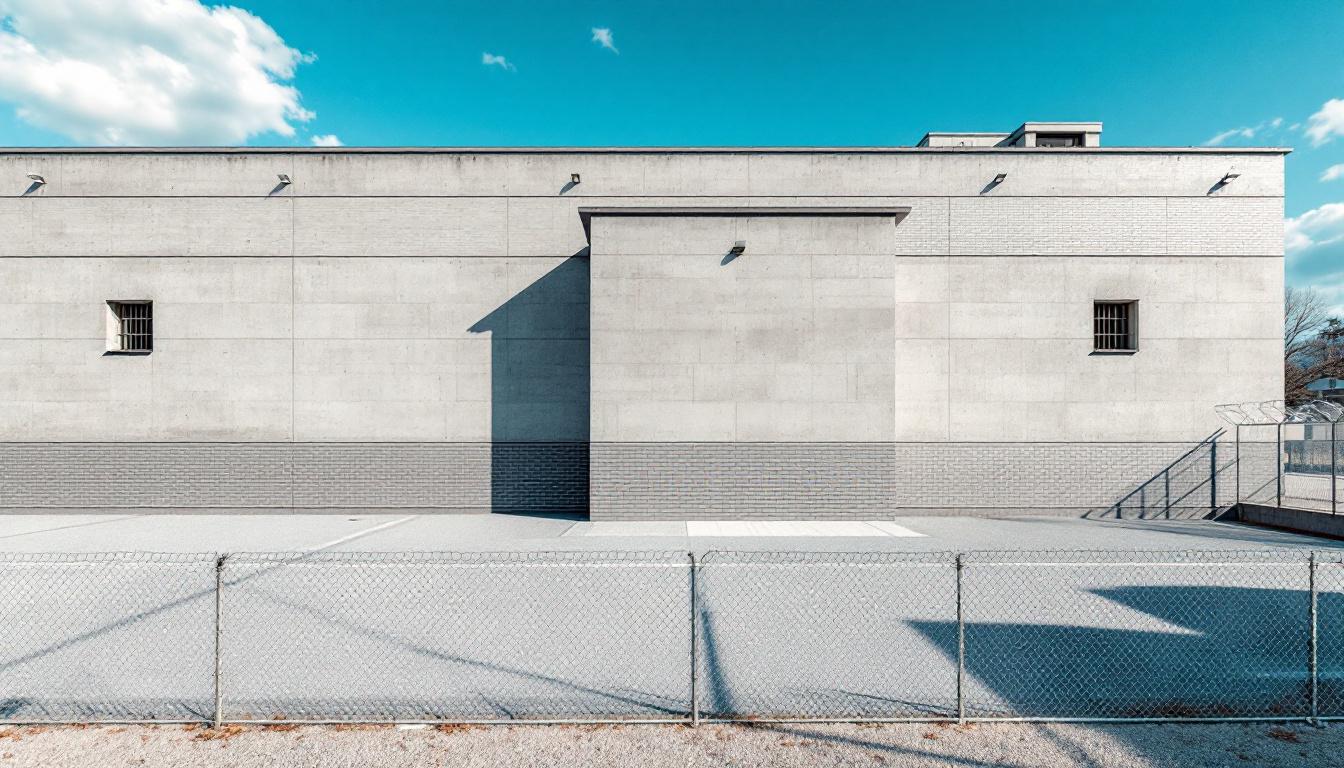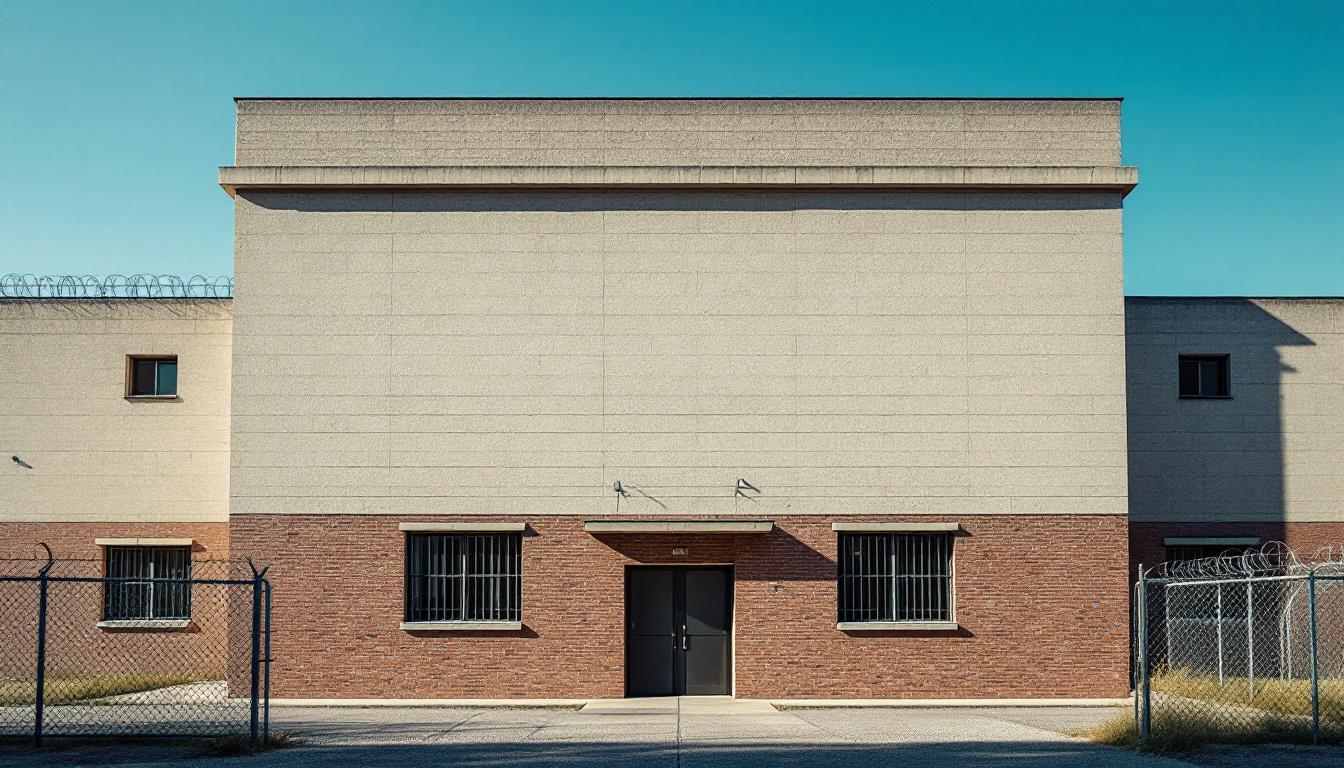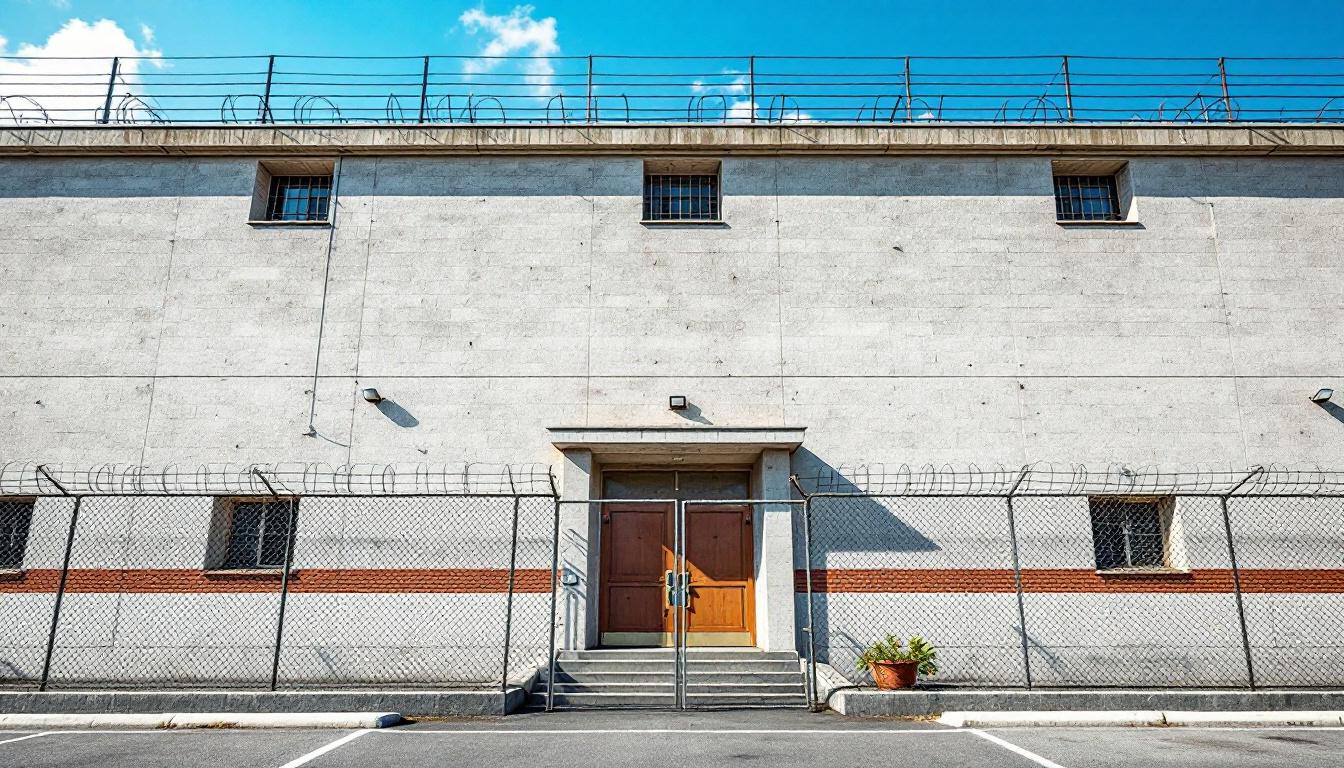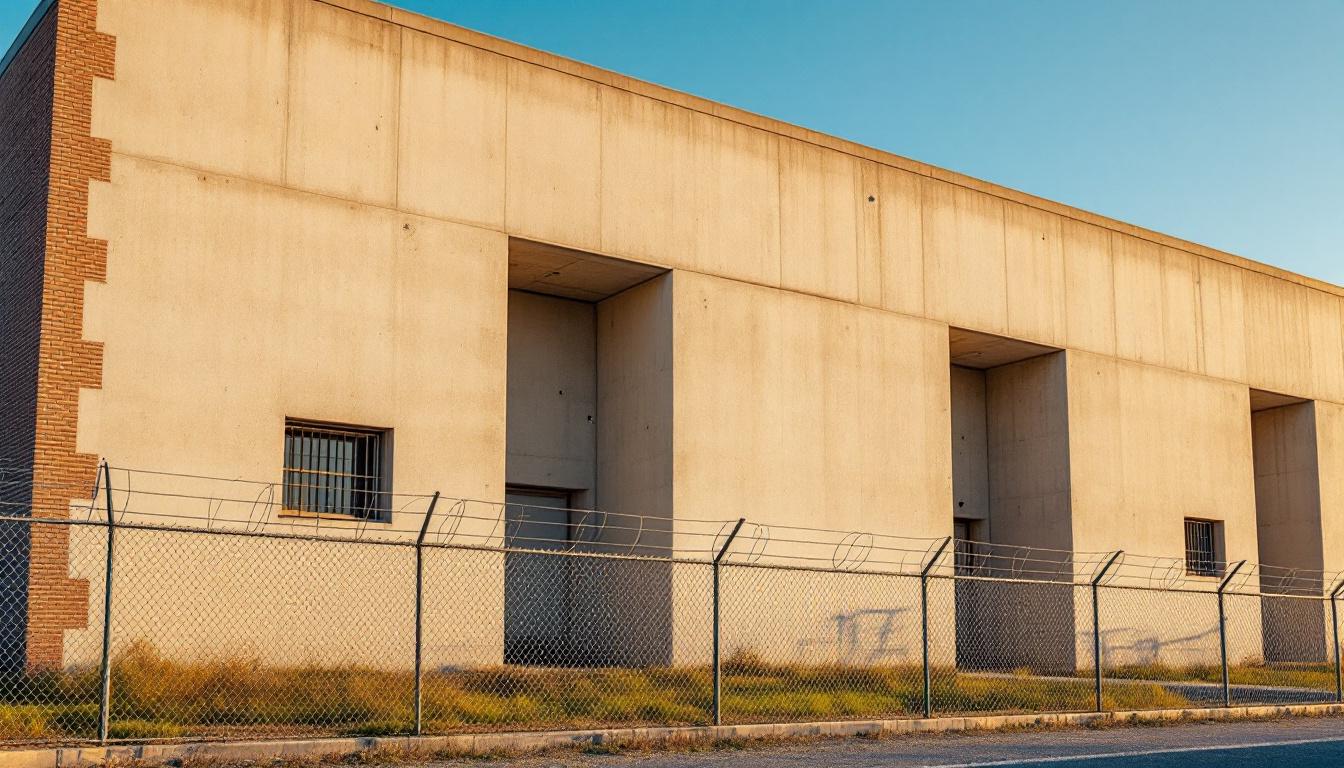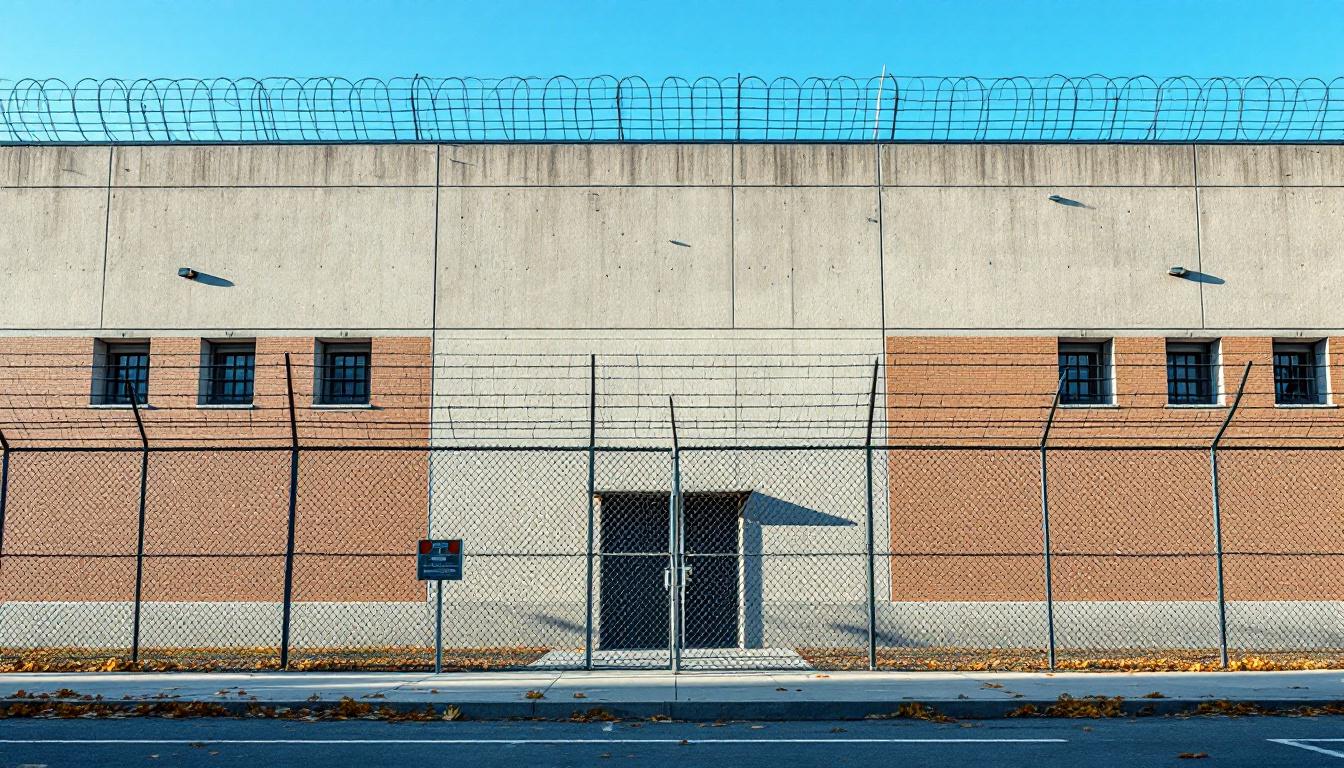
Quick Navigation
How to contact an inmate at Lew Sterrett Justice Center
This comprehensive guide will walk you through how to connect with an inmate at Lew Sterrett Justice Center. Follow the steps below to find an inmate and send letters and photos:
- Search for the inmate using our search tool below
- Create your account or log in to Penmate
- Write your message (up to 6,000 characters)
- Send instantly - inmates receive printed copies daily
Find an Inmate
Search for an inmate to start communicating today
Tip: You can search by first name, last name, or inmate ID number
To contact a person at Lew Sterrett Justice Center start by searching for the person on the facility website. Perform a search by following these steps:
- Step 1: Enter their first name and last name into the search form and click "Search"
- Step 2: Locate their inmate record
- Step 3: Write down their Inmate ID and any housing information provided
Important! Be sure to enter the person's full name. Nicknames should not be used.
How to Send Messages to Inmates

You can use your phone or computer to send emails, letters, and photos to an inmate. Messages are sent electronically to inmate tablets or kiosks at the facility. If you would like to send a message, start by searching for an inmate at Lew Sterrett Justice Center.
Sending Photos and Postcards

A great way to send love and support to a loved one at Lew Sterrett Justice Center is to send photos and postcards. It only takes a few minutes to send photos from your phone and it makes a huge difference. You can also mail postcards with words of support and inspiration, or design your own postcard for special moments like birthdays and holidays.
Important! Be sure not to send any explicit photos or they may not be approved by the facility. You can also use a photo printing app like Penmate to make sure your photos are printed at the correct size (4x6 or 3x5) and are mailed according to the rules and regulations of Lew Sterrett Justice Center.
Frequently asked questions about Lew Sterrett Justice Center
-
How long does it take to deliver a message?
If you're sending an email message your letter is usually delivered within 24-48 hours. For messages sent via mail you should expect delivery within 3-7 days. All messages will need be approved by Lew Sterrett Justice Center.
-
How much does it cost to send a message to Lew Sterrett Justice Center?
You can send a message free using your phone or mail a message via USPS for the price of a $0.60 stamp and envelope. You can also purchase credits or e-stamps from services starting at $1.99.
-
What services can I use to contact an inmate at Lew Sterrett Justice Center?
Penmate
You can use Penmate to send letters and photos to an inmate from your phone. It's an easy way to stay in touch during your loved one's incarceration. Use the inmate locator to find an inmate's location and contact information, then you can send messages within a few minutes.
Securus messaging
Securus may be another option for communicating with an inmate at Lew Sterrett Justice Center. You can create a friends and family account and purchase credits to send messages. All messages will be reviewed and must be approved by the facility.
JPay
Some county jails and state prisons may support sending messages with JPay. You must register an account with the system, find your loved one, and purchase stamps to send messages. For some locations you can also attach photos.
Smart Jail Mail
You may also check if Smart Jail Mail is available at Lew Sterrett Justice Center. Smart Jail Mail is operated by Smart Communications and has contracted with some state and county jails. After purchasing credits, your messages and photos are sent to the facility, printed out, and then handed out to your loved one.
-
What is the mailing address of Lew Sterrett Justice Center?
Mailing address:
Lew Sterrett Justice Center
111 Commerce St
Dallas, TX 75207
Phone: (214) 875-2460 -
What are the visiting hours at Lew Sterrett Justice Center?
Visiting hours at Lew Sterrett Justice Center vary by housing unit and security level. Generally, visits are scheduled on weekends and holidays, with some facilities offering weekday visits. Contact the facility directly at (214) 875-2460 or check their website for the current visiting schedule. Visits typically last 30-60 minutes and must be scheduled in advance.
-
What items are prohibited when sending mail to Lew Sterrett Justice Center?
Prohibited items typically include: cash, personal checks, stamps, stickers, glitter, glue, tape, staples, paperclips, polaroid photos, musical or blank greeting cards, hardcover books, magazines with staples, and any items containing metal or electronics. Only send letters on plain white paper with blue or black ink. Photos must be printed on regular photo paper (no Polaroids). Always check with Lew Sterrett Justice Center for their specific mail policies.
-
How do I send money to an inmate at Lew Sterrett Justice Center?
You can send money to an inmate at Lew Sterrett Justice Center through several methods: 1) Online using JPay, Access Corrections, or the facility's approved vendor, 2) Money orders mailed directly to the facility with the inmate's name and ID number, 3) Kiosks located in the facility lobby, or 4) Over the phone using a credit or debit card. Fees vary by method, typically ranging from $2.95 to $11.95 per transaction.
-
Can I schedule a video visit with an inmate at Lew Sterrett Justice Center?
Many facilities now offer video visitation as an alternative to in-person visits. At Lew Sterrett Justice Center, video visits may be available through services like Penmate, Securus Video Connect, GTL, or ICSolutions. Video visits typically cost $10-20 for 20-30 minutes and must be scheduled in advance. You'll need a computer or smartphone with a camera and reliable internet connection. Contact the facility for their specific video visitation policies and approved vendors.
-
What identification do I need to visit an inmate at Lew Sterrett Justice Center?
All visitors must present valid government-issued photo identification such as a driver's license, state ID, passport, or military ID. Minors must be accompanied by a parent or legal guardian who can provide the minor's birth certificate. Some facilities require visitors to be on the inmate's approved visitation list, which may require a background check. Contact Lew Sterrett Justice Center for specific ID requirements and visitor approval procedures.
-
How can I find out an inmate's release date?
To find an inmate's release date at Lew Sterrett Justice Center, you can: 1) Use the online inmate search tool if available, 2) Call the facility's records department, 3) Contact the inmate's case manager or counselor, or 4) Have the inmate provide this information during a call or visit. For privacy reasons, some facilities only release this information to immediate family members.
Facility Overview
Contact Information
Lew Sterrett Justice Center111 Commerce St
Dallas, TX 75207
Phone: (214) 875-2460

About Lew Sterrett Justice Center
Community safety and rehabilitation intersect meaningfully through the collaborative efforts of Dallas County Jail, a TX correctional facility that serves as a vital component in the region's justice system. Operating within the broader framework of Texas corrections, this county jail typically emphasizes partnerships between custody staff, healthcare providers, and community organizations to address the complex needs of individuals in its care. The facility generally maintains programs that may include educational opportunities, substance abuse counseling, and mental health services, recognizing that effective inmate services often require coordinated approaches that extend beyond traditional detention models.
Through its strategic location in Dallas, the facility typically serves multiple jurisdictions while working to balance public safety priorities with rehabilitation-focused initiatives. County jail operations generally encompass pre-trial detention, sentenced individuals serving shorter terms, and those awaiting transfer to other facilities. The collaborative approach often extends to working with local courts, probation services, and reentry organizations to facilitate smoother transitions back into the community. Staff members may coordinate with various departments to ensure that inmates have access to resources that support both immediate needs and longer-term stability goals.
The facility's contribution to regional public safety typically involves maintaining secure operations while simultaneously preparing individuals for successful community reintegration. Dallas County Jail generally offers programming that may include job readiness training, life skills development, and connections to social services, though specific offerings can vary based on available resources and individual circumstances. This dual focus on security and rehabilitation reflects broader trends in modern corrections, where county facilities increasingly recognize their role in breaking cycles of recidivism through comprehensive support systems and evidence-based practices.
Programs & Services
Personal growth and rehabilitation form the foundation of service delivery at Dallas County Jail, where inmates have access to various opportunities designed to address individual needs and prepare them for successful community reintegration. The facility typically emphasizes skill-building and personal development through structured programming that addresses both immediate concerns and long-term goals. Services often focus on helping participants develop practical abilities while working through personal challenges that may have contributed to their incarceration.
Educational and vocational services may provide inmates with valuable job-ready skills through vocational training opportunities. These programs typically focus on practical trades and marketable skills that can lead to employment upon release. Additionally, work programs within the facility often allow participants to gain hands-on experience while contributing to daily operations, helping them develop workplace habits and responsibility.
Support services and therapeutic interventions address the emotional and spiritual needs of inmates through various channels. Grief counseling may be available to help participants process loss and trauma, while faith-based initiatives often provide spiritual guidance and community support. The facility typically offers reentry preparation services to help inmates plan for their transition back to the community, covering essential topics like housing, employment, and accessing social services. Community service opportunities may also be available, allowing participants to give back while developing a sense of civic responsibility and personal accomplishment.
Daily Life & Visitation
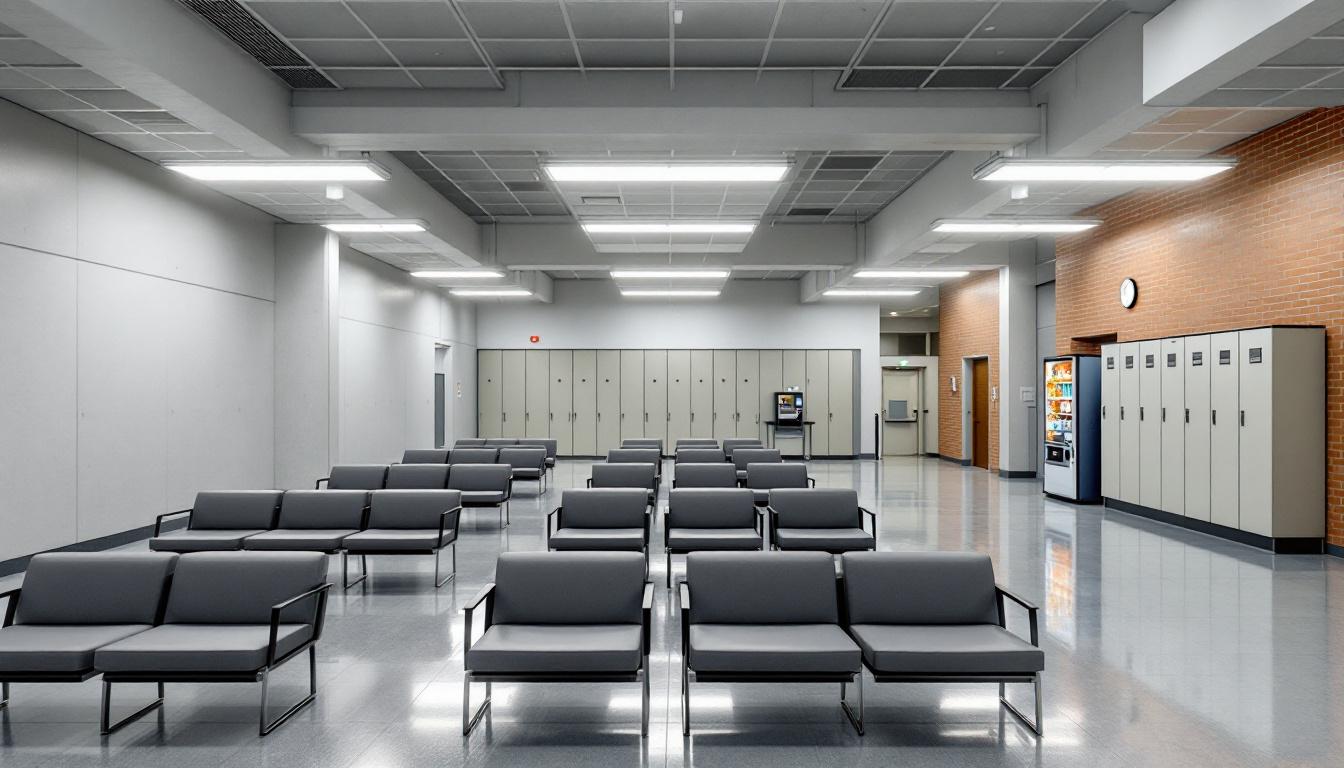
The concrete walls and steel doors of Dallas County Jail create a controlled environment where inmates must quickly learn to navigate structured routines and shared living spaces. At present, the facility actively maintains a regimented schedule that begins early each morning with headcounts and continues through designated meal times, work assignments, and evening lockdown procedures. Inmates typically adapt by establishing personal routines within the facility's framework, finding ways to maintain dignity and purpose despite the restrictive setting.
Housing units generally accommodate multiple inmates in dormitory-style arrangements or smaller cells, depending on classification levels and available space. While personal belongings remain limited to approved items, inmates may purchase additional necessities through the commissary system when funds are available. The dining areas serve meals at scheduled times, with inmates often gathering in common areas during designated recreation periods to socialize, watch television, or participate in available activities.
Additionally, the facility provides various programming opportunities that help inmates maintain connections with family and prepare for eventual release. Visitation typically occurs on scheduled days, allowing face-to-face contact with approved visitors, while phone privileges enable regular communication with loved ones outside. Work assignments within the facility may include kitchen duties, cleaning responsibilities, or maintenance tasks that provide structure and potentially reduce sentences. These elements combine to create an environment where inmates must balance adaptation to institutional life with efforts to maintain their identity and relationships beyond the facility walls.
Ready to Connect?
Start communicating with your loved one today
Search for an Inmate
